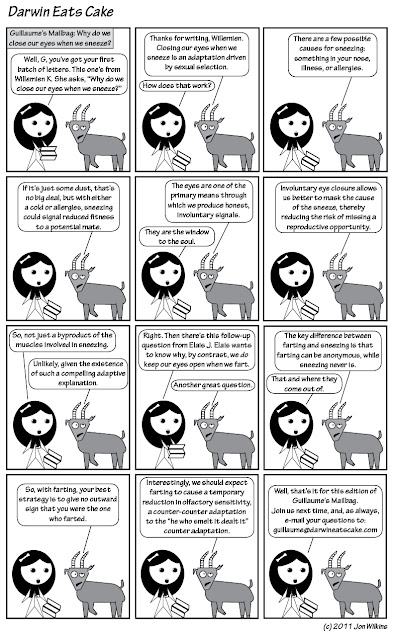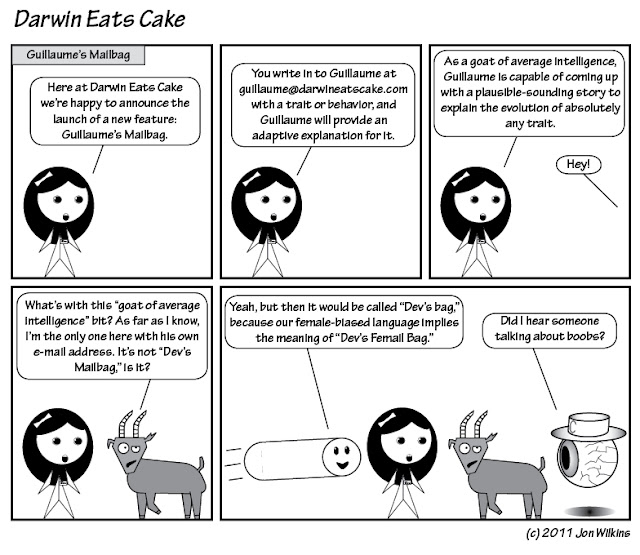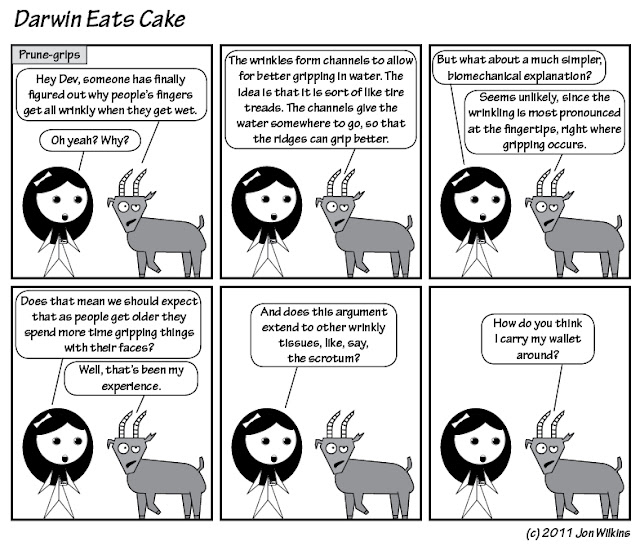So, Guillaume’s Mailbag has continued on its mission to provide an adaptive explanation for every existing trait. The most recent trait Guillaume has been tackling was submitted by John Wilkins, who asked, “Why do we make odd faces when we orgasm?”
In case you missed when I’ve plugged him before, JoHn Wilkins (no recent relation) is a philosopher of science in Australia. His most recent book is Species: A History of the Idea, and he runs an excellent blog called Evolving Thoughts. He recently concluded an excellent series of posts on “Atheism, agnosticism and theism” in which he discusses, among other things, what it means to have a belief. You can find the start of that series here.
But back to the face of orgasm. Guillaume took three full strips to answer this one, so I’ve waited until he was done to post them here. I think I’ve finally figured out how to make these full-page versions more readable on the blog, but it involved lowering the resolution of the JPEG, so, for higher-res versions of these three comics, head on over to Darwin Eats Cake. The first of the series of three can be found here.
For those who are interested, a couple of vole and oxytocin citations are provided below to get you started. The vole literature is actually quite extensive and all interesting. I’ve included a relatively recent paper, which will contain citations to a lot of the other work. No peer-reviewed publications are yet available on the eating and mating habits of Ursus philorgasmii.
Ross HE, Cole CD, Smith Y, Neumann ID, Landgraf R, Murphy AZ, & Young LJ (2009). Characterization of the oxytocin system regulating affiliative behavior in female prairie voles. Neuroscience, 162 (4), 892-903 PMID: 19482070
Carmichael MS, Warburton VL, Dixen J, & Davidson JM (1994). Relationships among cardiovascular, muscular, and oxytocin responses during human sexual activity. Archives of sexual behavior, 23 (1), 59-79 PMID: 8135652
Although at least one study suggests that, in men, prolactin is actually more strongly correlated with orgasm than oxytocin is:
Krüger TH, Haake P, Chereath D, Knapp W, Janssen OE, Exton MS, Schedlowski M, & Hartmann U (2003). Specificity of the neuroendocrine response to orgasm during sexual arousal in men. The Journal of endocrinology, 177 (1), 57-64 PMID: 12697037













